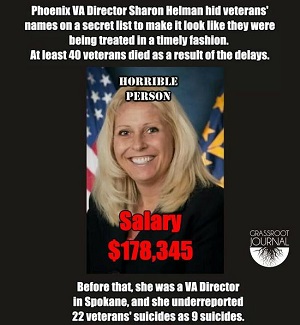Not all of our company-related posts are for Stupid Carrier Tricks© [ed: believe it or not]. Sometimes, there's just interesting announcements. For example:
■ In Special Open Enrollment news, United Healthcare has come out with its take on what counts as a Qualifying Event. What's interesting to me is that, for once, a carrier also explicitly details those things which don't trigger a Special Enrollment, most notably: "Voluntarily ending coverage."
Why is that so notable?
Because I've been getting a number of folks complaining about their existing plan's premiums, and wanting to switch (as if an ObamaTax-compliant plan is a real bargain). I've had to explain to them that, even if I could find less expensive coverage, it does them no good until next Fall.
■ As one who has seen Hospice Care up-close-and-personal, let me assure you that there are no finer people in the health care delivery system. What's a shame is that not everyone even knows about Hospice, or how to access their services. In fact, Dr. Randall Krakauer (a vice president at Aetna) recently testified before a Senate committee on Aging " urg[ing] senators to improve end-of-life benefits for patients in Medicare Advantage plans by changing the rules that govern use of hospice benefits. Medicare managers should let enrollees who seem to have as many as 12 months to live use hospice benefits."
Typically, Hospice services are available only to those who face imminent death, not a year away. Expanding that could relieve some of the burden from traditional health care facilities.
■ Our friend (and Long Term Care insurance guru) Randy G tips us that Genworth has made available an interactive map comparing cost of (long term) care across all 58 states.
Of course, I checked my own beloved Buckeye State, and saw that the average cost for a (semi-private) room in a nursing home is north of $75,000 a year.
Are you prepared?
■ In Special Open Enrollment news, United Healthcare has come out with its take on what counts as a Qualifying Event. What's interesting to me is that, for once, a carrier also explicitly details those things which don't trigger a Special Enrollment, most notably: "Voluntarily ending coverage."
Why is that so notable?
Because I've been getting a number of folks complaining about their existing plan's premiums, and wanting to switch (as if an ObamaTax-compliant plan is a real bargain). I've had to explain to them that, even if I could find less expensive coverage, it does them no good until next Fall.
■ As one who has seen Hospice Care up-close-and-personal, let me assure you that there are no finer people in the health care delivery system. What's a shame is that not everyone even knows about Hospice, or how to access their services. In fact, Dr. Randall Krakauer (a vice president at Aetna) recently testified before a Senate committee on Aging " urg[ing] senators to improve end-of-life benefits for patients in Medicare Advantage plans by changing the rules that govern use of hospice benefits. Medicare managers should let enrollees who seem to have as many as 12 months to live use hospice benefits."
Typically, Hospice services are available only to those who face imminent death, not a year away. Expanding that could relieve some of the burden from traditional health care facilities.
■ Our friend (and Long Term Care insurance guru) Randy G tips us that Genworth has made available an interactive map comparing cost of (long term) care across all 58 states.
Of course, I checked my own beloved Buckeye State, and saw that the average cost for a (semi-private) room in a nursing home is north of $75,000 a year.
Are you prepared?


























